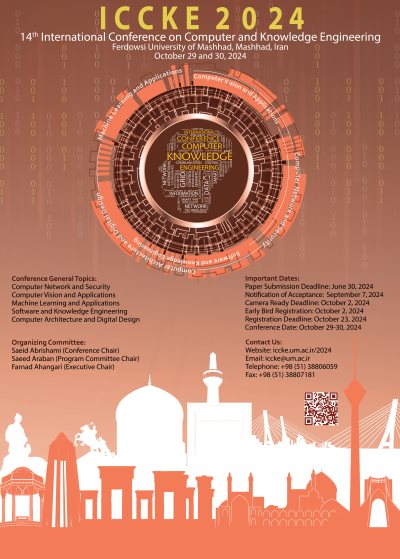0% Complete

Authors :
Keywords :
Abstract :
List of archived papers
Afsaneh Hasanebrahimi - Bahareh Kaviani Baghbaderani - Reshad Hosseini - Ahmad Kalhor
Negin Shafinezhad - Hamid Abrishami - Saeid Abrishami
Mohammad Jamshidi - Fatemeh Daneshfar
Arghavan Irankhah - Sahar Rezazadeh Saatlou - Mohammad Hossein Yaghmaee - Sara Ershadi-Nasab - Mohammad Alishahi
Hamed Mahmoudi - Behrouz ShahgholiGhahfarokhi
Amirhossein Ghaemi - Habibollah Danyali - Alireza Ghaemi
Mohammad Mehdi Naseri - Shima Tabibian - Elaheh Homayounvala
Marzieh Naghdi Dorabati - Reza Ramezani - Mohammad Ali Nematbakhsh
Elaheh Norouzi Ghehi - Ali Fallah - Saeid Rashidi - Maryam Mehdizadeh Dastjerdi




